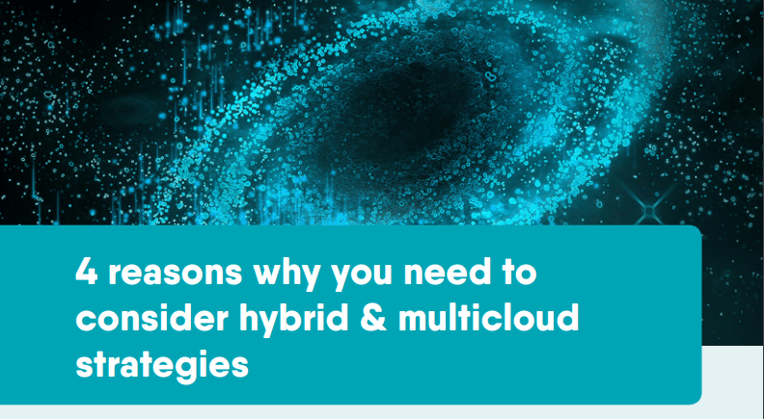Get the best of all worlds with hybrid and multi-cloud
Not every workload is destined for cloud migration. Hybrid and multi-cloud help businesses combine cloud and on-premises infrastructure to get the best results.
Cloud migration has helped enterprises transform the way IT works, delivering more compute and storage at a greater scale, and often for cheaper, than on-premises alternatives. But it is not a silver bullet. While pundits weighing up the technology in the late 2000s would have you believe that every piece of data, service and workload would eventually be cloud-bound, that simply isn’t the way things work today. Some things are best kept out of the cloud. Read on to learn why, and how approaches such as hybrid cloud and multi-cloud are helping businesses like yours get the best of both worlds.
----------------------------------------------
Read the 4 most pertinent reasons why you should consider hybrid and multi-cloud strategies >>
----------------------------------------------
Some things are better on the ground
Yes, cloud services can offer more flexibility, greater agility and lower total cost of ownership than on-premises IT. But there are some instances where it makes sense to keep your workloads in your data centre. One of the key considerations will naturally be around compliance and security. For heavily regulated industries, keeping sensitive data out of the cloud is the easiest way to stay on the right side of regulations. And for those bound by data sovereignty laws, there may be no choice but to keep certain datasets on-premises.
Beyond network security and compliance, on-premises systems can be a better destination for data that demands a specific class of performance. For instance, any workload that demands minimal latency may be better served inside the data centre than in a cloud that is much further away (and more prone to latency as a result). Likewise, some data management processes may not suit certain cloud price models. When data is used frequently, it may be more cost-effective over the long term to store it on-premises rather than in a cloud that charges based on bandwidth.
Get the best of all worlds
For organisations that want to make the most of both on-premises and cloud systems, there have always been concerns around integration. How do you keep systems working together effectively when they’re split between your data centre and a range of different clouds? Hybrid cloud and multi-cloud approaches offer a solution to this.
With multi-cloud, you integrate services from multiple cloud vendors, so you can avoid vendor lock-in and source solutions from a mix of providers. Hybrid cloud takes this even further, integrating multiple clouds with on-premises infrastructure too. With both approaches, the key is that you maintain visibility of data wherever it is. Effectively, you can manage everything under a single pane of glass, whether it’s in one cloud or another—or even in your own data centre.
How do you integrate across clouds and on-premises infrastructure?
If hybrid and multi-cloud strategies are so effective, why isn’t every business using them? That’s because integrating and getting visibility across multiple types of infrastructure isn’t easy. Some solutions exist. You can adopt a hypervisor to sit atop your different clouds and on-premises sites to unify management and visibility. Or, you can virtualise your different environments and manage them as a single pool of resources using converged or hyper-converged infrastructure. There are likely many more ways you can adopt a hybrid or multi-cloud approach. But some solutions may work better than others, depending on your IT infrastructure and wider business goals.
If you use a managed service provider, it’s time to have a chat with them
Achieving a true multi-cloud or hybrid cloud strategy can be daunting, and in many cases can demand a dramatic rethink of how you manage your IT estate. The good news is that if you work with a managed services provider (MSP), they can manage much of the complexity in moving to this new way of working.
However, you’ll want to have a frank conversation with your MSP about multi-cloud and hybrid cloud to make sure they’re aware of the benefits of each, which workloads are best suited to different types of infrastructure, and which strategy is the best fit for your business.
And if you’re not using IT managed services yet? You might want to take a look at our ebook:




